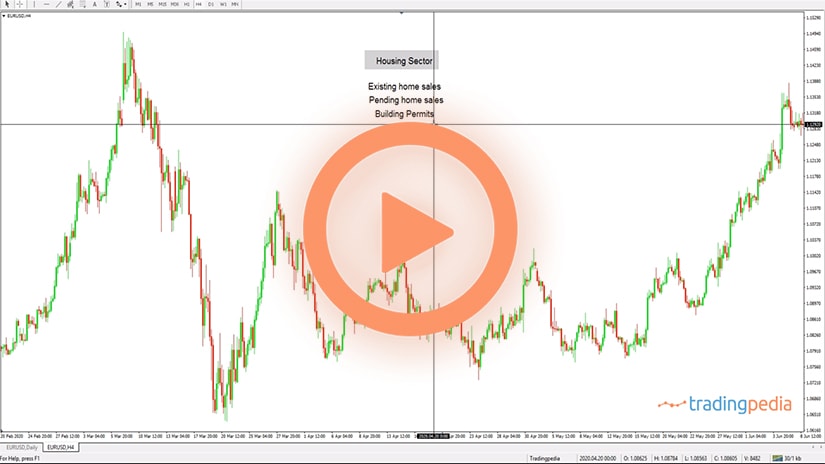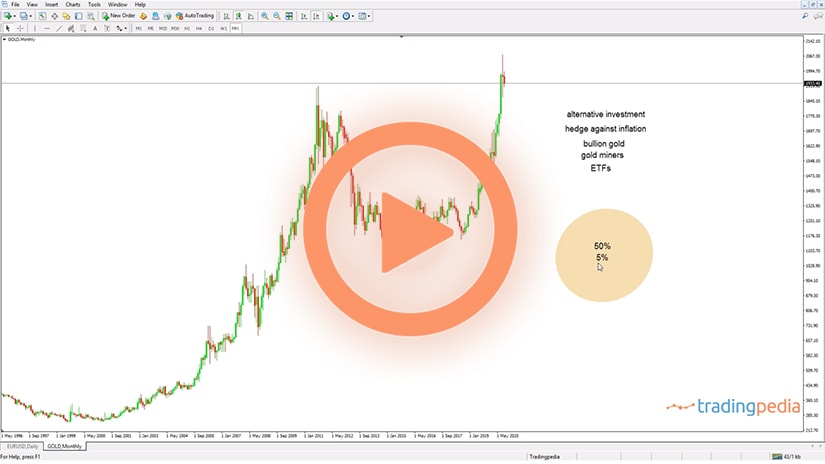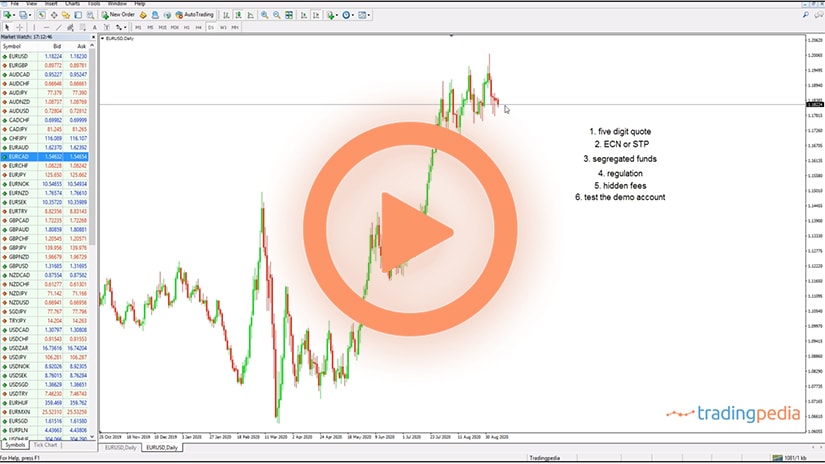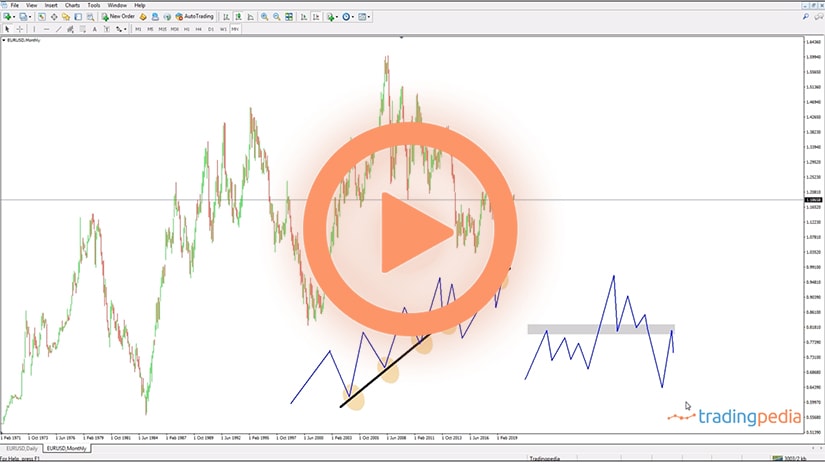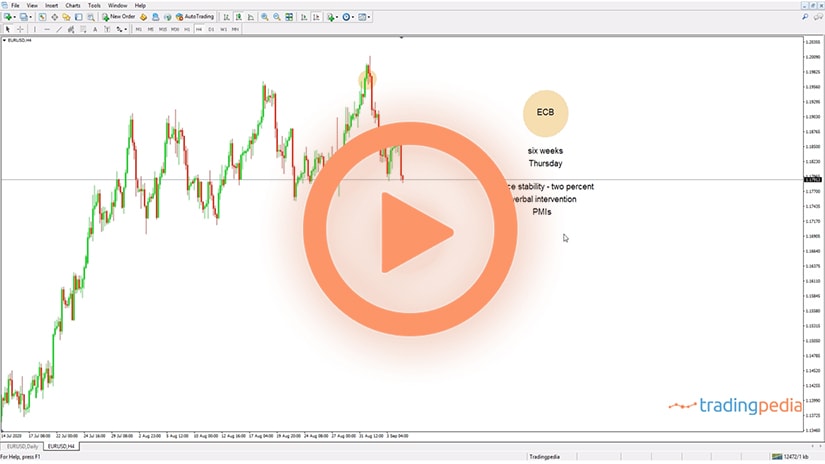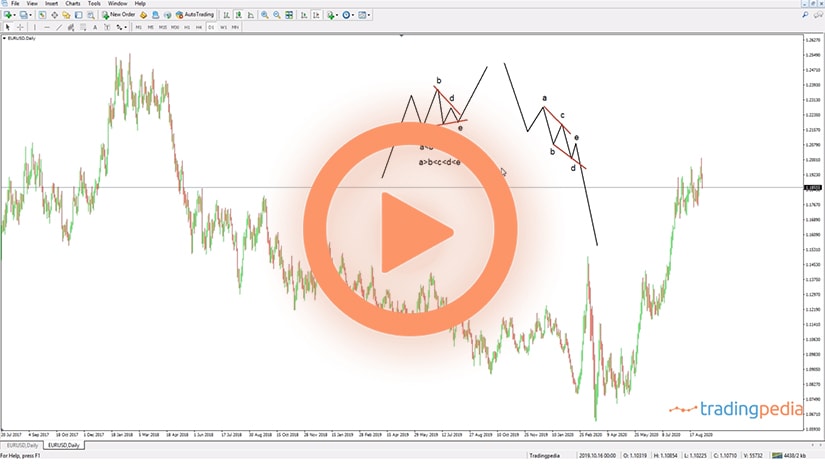
Hello there, this is tradingpedia.com and this video deals with PMIs – what are they and why the PMIs are so important for the currency market and for fundamental analysis in particular.
Overview
When it comes to trading, you have two things to consider. One is technical analysis or interpreting charts like this one here based on continuation patterns, reversal patterns, and one. Another one is fundamental analysis, meaning that if a currency pair like the EURUSD here you look at the economic data out of the Euro area and out of the United States and you put them together to form an idea about the strength of the two economies and which currency is supposed to appreciate or depreciate against the other one.
Why the PMIs Are Important
The PMIs are very important. After the interest rate decisions and the job data, the PMIs are the next in line in terms of importance. This is a survey of purchasing managers and it is a diffusion index, a leading indicator of economic health.
Everything relates to the 50 level. Imagine that this is the 50 level and if the PMI of a sector is bigger than 50, it is positive for the economy and currency, and if it is smaller than 50, it is negative for the economy and the currency.
The more it deviates from the 50 level, to the upside or to the downside, the bigger the impact on the currency. In economic expansion what you want to see is consistent PMIs above the 50 level, but not too high. For instance, rarely it goes 70, but if it goes towards 70, it shows an economy or sector that is overheating. You don’t want to see that on the long term because inflation will become rampant and sustained economic growth will be affected. Therefore, you want to see something above the 50 level, consistently, and that sustains economic growth.
PMI’s come out for the services and manufacturing sectors. In some economies, also for the construction sectors. In the United Kingdom, we have PMI services, manufacturing, and construction. If, for instance, the manufacturing PMI comes out below 50, construction below 50 as well, but if the PMI services comes out close to the 58 or 59, it will offset the two releases because the U.K., like all developed economies, is a service-based economy.
What About the Other Countries
In Australia there are also three PMIs, just like in the U.K. But for the rest of the world there are only two releases – manufacturing and services, with one exception, the United States.
In the United States it is called ISM, from the Institute for Supply Management, and it calculates a manufacturing and non-manufacturing, basically manufacturing and services. In Canada there is only one PMI calculated for all the economy, named Ivey PMI, and it offers a very good indication about the state of the sector and the economy.
This is the regular economic calendar and in the previous week we had various PMI releases. This is the Spanish PMI Manufacturing, coming at 49.9 on expectations of 52.5 and on previous 53.5. Well, it is obvious that the Spanish PMI Manufacturing fell below the 50 and it shows a contracting sector, coming down from 53.5. If you check the details you see the issues there, what is the employment component, etc., so you form an idea about the strength of the Spanish economy.
The same thing you may do on the ISM Manufacturing and Non-Manufacturing and may form an idea about the future employment data. The ISM Manufacturing came 56, much better than 50 and the previous was 54.2, showing an improvement. If you check the employment component and you have a rising trend as well, the implications are that the NFP will be better than expected and you can position on the long side of the USD in a fundamental analysis interpretation.
Related Videos
How the PMIs Are Calculated
Most of the PMIs are calculated by the HIS Markit and this one calculates PMIs for more than 40 economies worldwide and those PMIs appear on the economic calendar. For example, if we go on September 3rd we see Spanish services PMI, final services in the Euro zone, etc.
ISM Non-Manufacturing 57.9 when compared with 57 shows a strong growth in the services sector in the United States, which is a service based economy as well, so very important to interpret.
Consider the 50 level when interpreting the PMI and that the release comes for the services, manufacturing, and sometimes for the construction sector as well. Also, in the United States, there is ISM Manufacturing and Non-Manufacturing, while in Canada there is only one release, the Ivey PMI, and for the rest of the world the PMIs are calculated by HIS Markit.
This is one of the most important economic releases.
Bye, bye.
